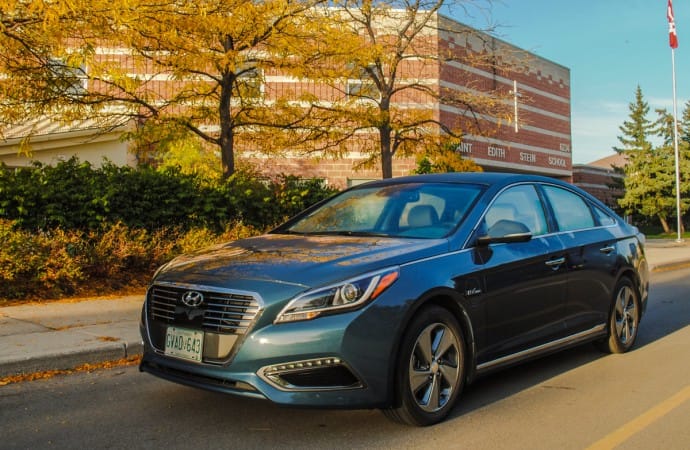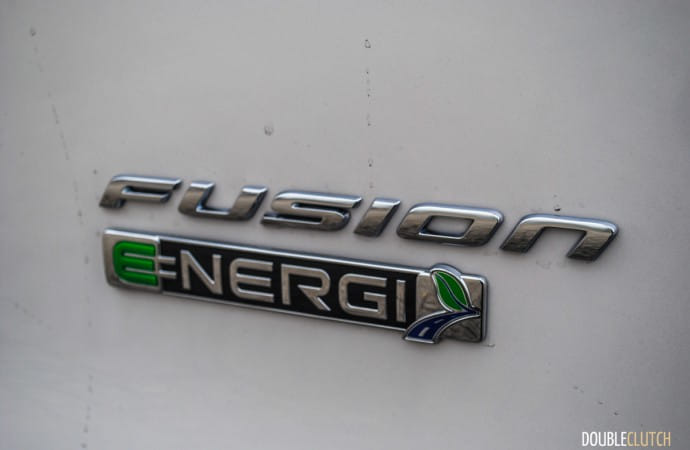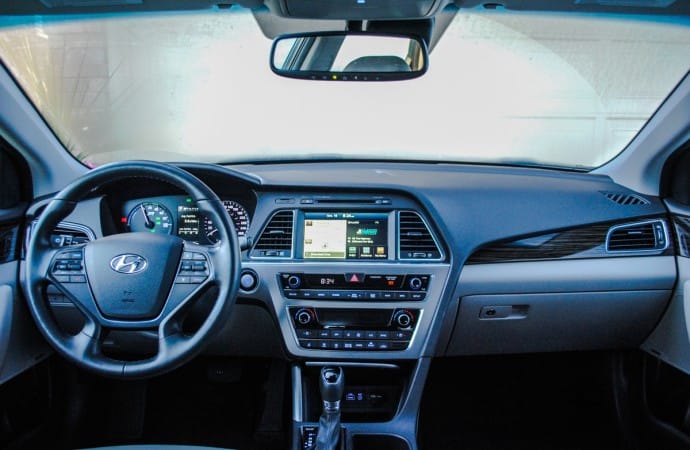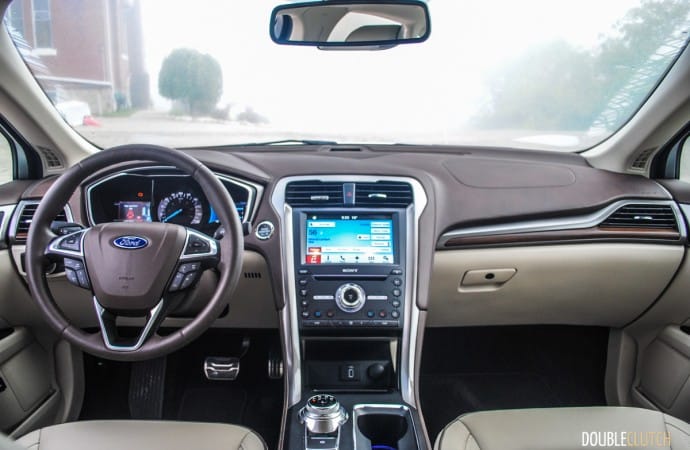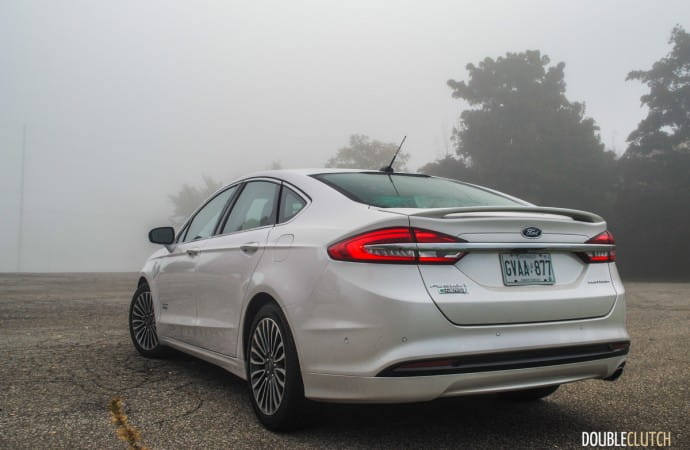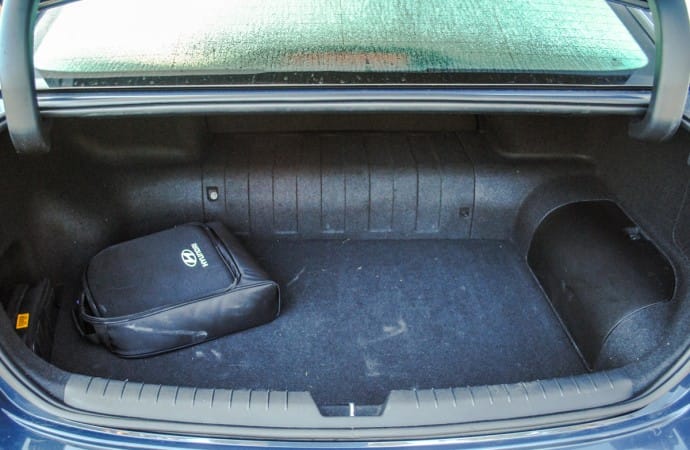I commute around 120km round trip, five days a week in rush hour Toronto traffic. My daily grind truly can suck any passion out of driving. It doesn’t matter how nice of a car I am driving, crawling along an inch at a time on the 401 for hours is never going to be a pleasant experience. If you’re going to suffer through something like that, often the best approach is to forget driving something fun and find capable of keeping you as comfortable as possible, all while minimizing the hit you’re going to take at the fuel pump. In that regard, some of the best commuter cars I’ve had the chance to drive are well equipped compacts.
The Civic (reviewed here), Corolla, and the like can be kitted up with all the latest gadgets, and the small displacement four-cylinders are perfectly happy to slowly sip fuel and idle in traffic forever. There’s a new segment though; and that contains the plug-in hybrid sedans that have slowly be growing in popularity over the last couple of years. Back in 2013 when I first drove the Honda Accord PHEV (reviewed here), I recall thinking how foreign the technology seemed, and how weird it felt plugging in the car every night. Recent years have seen the technology continue to proliferate the industry, and now almost every major automotive manufacturer offers some form of plug-in hybrid vehicle.
We took two prominent players in the plug-in hybrid (PHEV) sedan segment and drove them back-to-back to see how the two manufacturers have applied the technology, and where our preference would fall. First up is the brand new 2017 Ford Fusion Energi, in fully loaded Platinum trim. The Fusion looks just like any other Fusion from the outside save for some badging and the charging port. My particular test car came finished in Platinum White Tri-Coat, with a soft cream leather interior, riding on the standard 19” wheels. From the outside the Fusion carries a certain premium look that is often missing in this segment. It’s a fuel miser, but you’re certainly not giving up anything in the way of style.
The challenger is a 2016 Hyundai Sonata PHEV, also a fully loaded Ultimate offering. My Sonata came finished in a unique Night Sky blue, on black leather and sporting aerodynamic 17” wheels with low rolling resistance tires. The Sonata PHEV does very closely resemble the standard Sonata, with the exception of the wheels, the unique clear taillights and of course the badging and charge port. Notably, the port does not light up on the Sonata, while the Fusion’s is well lit with soft blue LEDs. This makes plugging in the Sonata at night a little tricky if you’re not familiar with it, but it’s also touches like that which serve to make the Fusion look more finished on the outside. The Sonata, while handsome, does look the part of a super-efficient new PHEV, while the Fusion’s eye catching flare sets it apart.
Before we go on, let’s tackle the issue of cost. Firstly, the Sonata PHEV is only available in Ultimate trim, which comes fully equipped and rings in at $43,999. Right now, Ontario (our home Province) offers a rebate of $8,460, bringing the total cost down to $35,539. The Fusion Energi actually comes in three different trim levels; SE, Titanium and Platinum. The MSRP on my fully decked out Platinum tester comes to $45,088, but a lesser SE starts at a rock-bottom (for a PHEV) $35,088, and the mid-range Titanium can be had for $37,288. Regardless of trim level, the Fusion qualifies for a rebate of $7,730, bringing the cost of my tester to $37,358.
This means the Fusion Platinum is about $2000 more expensive than the Sonata Ultimate, but if you’re willing to step down a trim level to the Titanium, it offers huge savings. Another noteworthy incentive in Ontario is the Green Vehicle license plate, which all PHEVs are eligible for. These plates give drivers the ability to use high occupancy vehicle (HOV) or carpool lanes even if they are the sole occupants in the car. Both of my test cars had them, and they certainly came in handy. Depending on your daily route, the plates alone may be enough to consider buying a PHEV – not to mention prime parking at certain establishments.
Being top trim level cars, both of these testers are extremely well equipped with heated and ventilated seats, heated steering wheels, all of the latest electronic driving aids, navigation systems, powerful stereos, and more. Oddly, the Sonata PHEV is not available with a sunroof, while the Fusion Energi Platinum comes standard with a power sliding sunroof.
The interior in the Sonata is all business, and as a result comes off as a little drab and plain. The black leather is standard Hyundai fare and feels a bit on the hard side, while the rest of the interior materials are a combination of hard and soft plastics. They’re agreeable, but definitely not something to show off. The layout is thought-out, with intuitive, easy to reach controls and nicely placed steering wheel buttons. By comparison, the interior in the Fusion is downright impressive, and actually did garner many compliments from passengers.
The Fusion’s seats are intensely comfortable and finished in rich-feeling quilted leather with brown piping. The quilted leather is carried onto the door panels, and the brown is picked up by tasteful low-sheen wood accents and a brown leather dash-top. To the untrained eye, the interior in the Fusion would have no problem being passed off as belonging to a Lincoln or Cadillac. The controls in the Fusion (equipped with the SYNC3 infotainment system) are not as intuitive as the Hyundai, but by the end of the week I was used to them.
Both cars offer loads of convenient storage up front, and seating for rear passengers that does not appear to be impeded by the large lithium-ion batteries at all. Like most hybrids, neither of these cars have folding rear seats, but the batteries do impede significantly on trunk space in the Fusion; the rear seats had to be folded into service for our weekly grocery run, which might make things a little difficult if the Fusion Energi was your only family vehicle. On the flip side, the Sonata’s trunk seems comparably un-intruded by the batteries.
On the road the cars actually feel very similar. And they should, because they’re both midsize sedans powered by 2.0L Atkinson cycle four-cylinder engines, assisted by electric motors. The Fusion’s 7.6 kWh electric and 2.0L gas motors combine for a maximum output of 188 horsepower, while the larger 9.8 kWh setup in the Sonata helps get the output up to 203 horsepower. Both cars are agile when moving solely on the torquey electric motor, but once that’s depleted and you’re on standard hybrid mode, feel sluggish under the additional weight of the system.
This extra weight does serve to soften the ride, and both of these cars float down sort of like a V8-powered American sedan from years gone by. Neither car handles particularly well either given the weight and the energy conserving tires, but the Fusion does feel a little more sure-footed around quick highway ramps, and I credit that to its larger tires. Also notable, driving along on electricity-only means no engine noise, so road and wind noise are a lot more noticeable. Fortunately, both the Fusion and Sonata do a very good job of isolating you from those exterior sounds, making for a very quiet and comfortable ride.
What everyone has been waiting for no doubt is the efficiency statistics. With the Fusion Energi’s smaller battery, I was able to get between 30-34 kilometers on a full charge before the car switched over to hybrid mode. The Sonata is capable of 40-43kms, a significant improvement, but it does seem more sensitive to the use of climate control. For instance, if I ran the climate control (heat) in the Fusion I didn’t notice any significant change in efficiency or range, but with the Sonata running the heat at all meant the gas engine would need to start up to produce heat.
The longer EV range in the Sonata allowed me to average 3.3L/100km for the week, while the Fusion returned 3.9L/100km. Both are pretty impressive numbers, but also provide the potential to do much better. If I had the ability to charge at the office, I could expect those numbers to drop dramatically, and better yet, if my office was less than 35-40km from home it wouldn’t be out of the question to go all week without burning any gas at all (a colleague did just that in the Sonata PHEV earlier in the year).
I did charge the cars each night in my driveway using the supplied 120V charger. Charge time ranged between 6.5-8 hours, which is fine for most commuters. That said, if I owned one of these, a 240V charger, which accelerates charging time to 2-3 hours, would be a very wise investment. Using some rough math, even with Ontario’s sky-high electricity rates, a full charge in one of these costs about $1.50; or approximately a litre and a half of gas at today’s price.
With charging stations now popping up everywhere, it’s never been easier to fit a PHEV into your life. With the rebates, HOV lane privileges and of course, fuel savings, it’s easy to see why consumers are slowly but steadily jumping on-board. Between these two, my personal preference would fall to the Ford Fusion Energi Platinum strictly because the interior is an absolutely gorgeous place to spend your commute time, and the car just generally feels more upscale. Of course, with that I’d be giving up the greater efficiency and larger trunk of the Sonata, but it’s a trade-off I am willing to make. If efficiency is your key priority, then the Sonata might be your ticket.



















